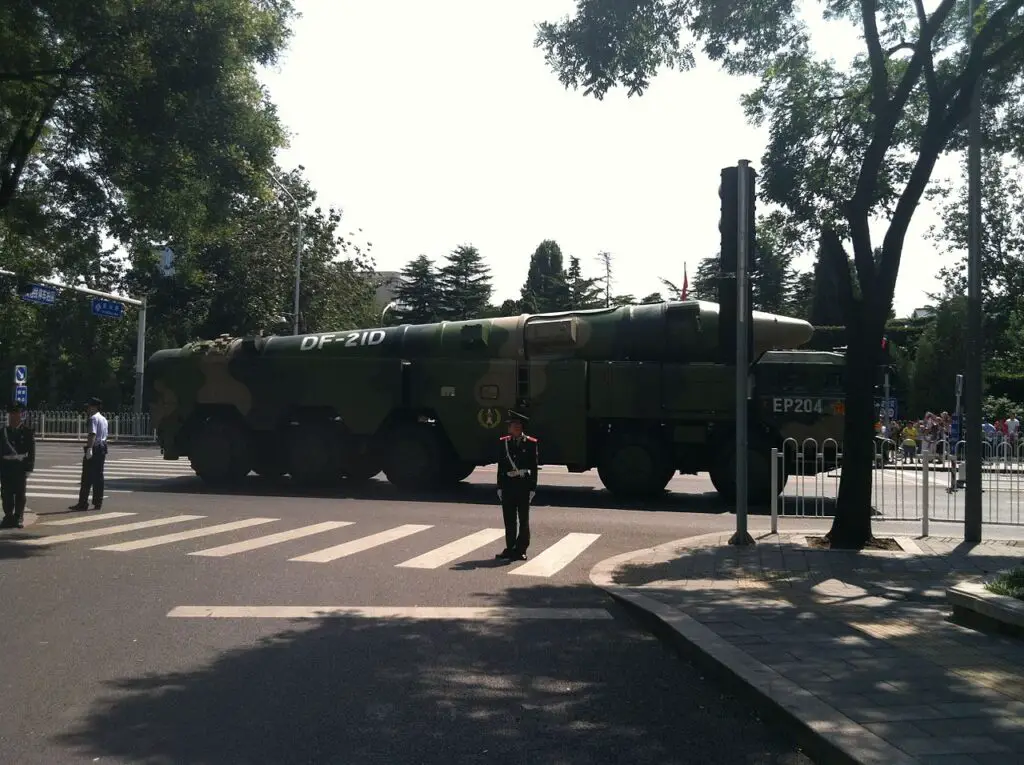India’s Defence Research and Development Organisation (DRDO) is currently developing the Agni-Prime (Agni-P) medium-range ballistic missile for strategic forces. This missile is expected to play a strategic and tactical role soon, equipped with nuclear or conventional warheads. With Agni-P, DRDO has demonstrated its capabilities in missile technology. The capabilities of Agni-P are truly remarkable. DRDO has termed Agni-P a new-generation missile. Due to the use of composite and lightweight electronics, it is lighter than its predecessors in the Agni series. The missile is comparable to China’s DF-21D missile and falls in the same category.
Features of Agni-P
Agni-P, a two-stage, solid-propellant medium-range ballistic missile, can effectively neutralize targets at a distance of 1,000 to 2,000 kilometers with a Circular Error Probability (CEP) of less than 10 meters. It boasts two significant improvements over Agni-A1: canister launch capability and extended range. The cauterized design enhances its readiness compared to non-rasterized missiles. The nuclear warhead is attached before being placed in the canister, a feature that further enhances its operational efficiency.
Besides the canister launch, Agni-P uses other technologies from its predecessors, Agni-4 and Agni-5. It weighs approximately 23-25 tons. The mobile system includes composite rocket motors and a ring laser gyroscope-based inertial navigation system, which is augmented by satellite navigation with a backup micro-navigation system.
The Agni-P employs a sophisticated dual redundant navigation and guidance system comprising a micro inertial navigation system and an inertial navigation system. This enables enhanced maneuverability and accuracy during the terminal phase of flight.
China’s DF-21D vs. India’s Agni-P
The Agni-P includes state-of-the-art technology, such as composites, advanced propulsion systems, unique guidance and control mechanisms, and state-of-the-art navigation systems. This enhances the missile’s sophistication and dependability compared to the DF-21D.
The Agni-P is equipped with a Maneuverable Reentry Vehicle (MaRV) that enables it to execute precise movements during reentry to avoid interception by missile defense systems. The DF-21D does not have this capacity.
The Agni-P has a payload capacity of 1.5 tons, which contains a single MaRV. On the other hand, the DF-21D can carry a payload of 600 kilos, which can consist of one or more warheads.

The Agni-P missile has a range of 1,000 to 2,000 kilometers. It boasts a high level of accuracy, with a circular error probability (CEP) of less than 10 meters. The DF-21D has a projected range of approximately 1,450-1,550 kilometers.
The Agni-P has undergone rigorous testing, including numerous successful launches, showcasing its dependability and advanced stage of development. Although the DF-21D is now in use, it has not undergone the same level of modern testing and development as other systems.
The Agni-P is a missile stored in a canister, providing advantages in terms of storage, mobility, and quicker launch times than the DF-21D.
The DF-21D measures 10.7 meters in length, 1.4 meters in diameter, and weighs 14.7 tons, while the Agni-P measures 10.5 meters in length, 1.15 meters in diameter, and weighs 11 tons. However, the Agni-P’s superior technology and design make it a more efficient and effective missile.
The Agni-P’s MaRV technology and sophisticated guidance systems enhance its capability to evade interception by missile defense systems, hence serving as a potent countermeasure against anti-ballistic missile systems.
In summary, the Agni-P missile surpasses the DF-21D in its advanced technology, maneuverability, payload capacity, range, accuracy, and development milestones, making it a more sophisticated and lethal weapon.
Capability to Target Moving Ships
Although the Agni-P was not initially intended to function as an ASBM, its advanced guidance, maneuverable warhead, and potential for radar seeker integration indicate that it has the potential to be transformed into a highly effective anti-ship ballistic missile platform, comparable to China’s DF-21D.
Indian defense experts perceive the Agni-P as a component of the ongoing research and development of an advanced anti-ship ballistic missile (ASBM) to improve India’s sea denial capabilities against Chinese naval forces in the Indian Ocean region.
When fitted with a radar seeker, the Agni-P’s accuracy and maneuverability in its terminal phase allow it to target a moving ship. DRDO has already developed an RF seeker for the Pralay missile, allowing it to use radar images for homing. It is entirely possible that the Agni-P version can be developed as an anti-shipping ballistic missile (ASBM) similar to China’s DF-21D.
Although China’s DF-21D is the first missile to assert its ASBM capability, other nations are also pursuing similar technology.
The United States has been actively advancing the development of hypersonic weapons, which have the potential to be used as anti-ship weapons.
It has been reported that Russia is currently developing ASBM capabilities, possibly as a component of its Kinzhal missile program.
Iran asserts that it has acquired ASBM capabilities, although the degree and efficacy of these capabilities are unclear.
North Korea has demonstrated a keenness to develop such capabilities, as seen by its testing of possible ASBM weapons.
